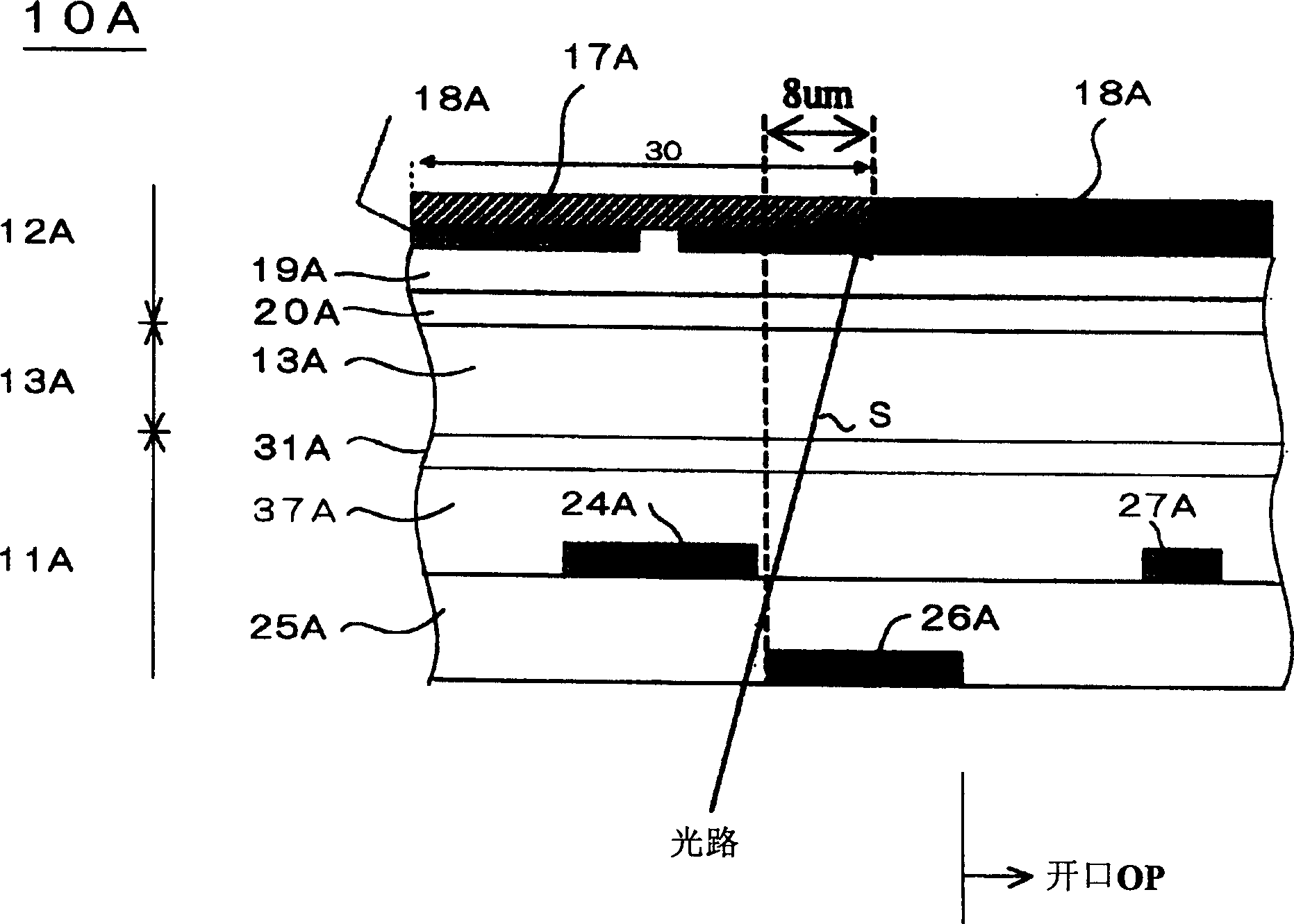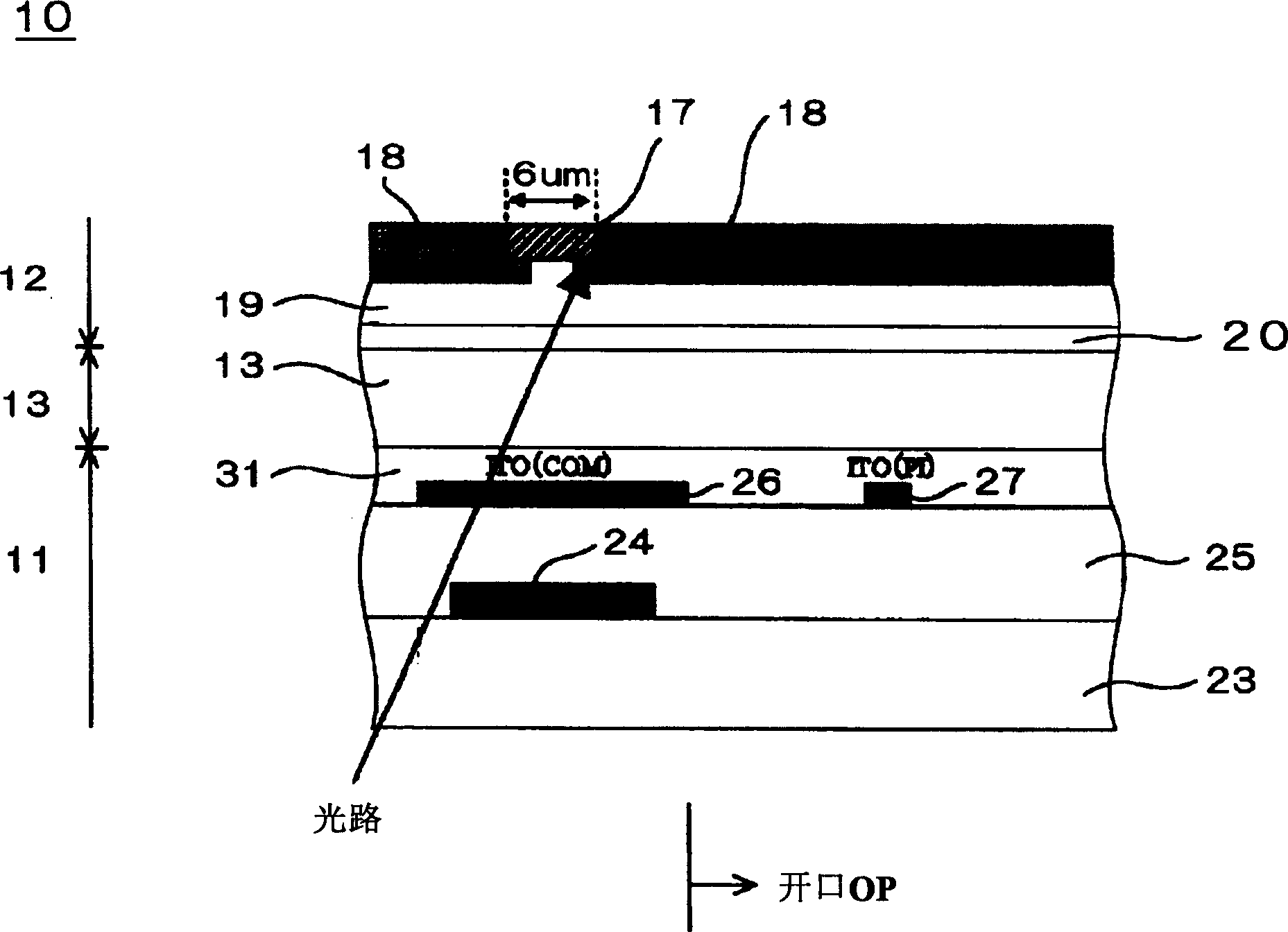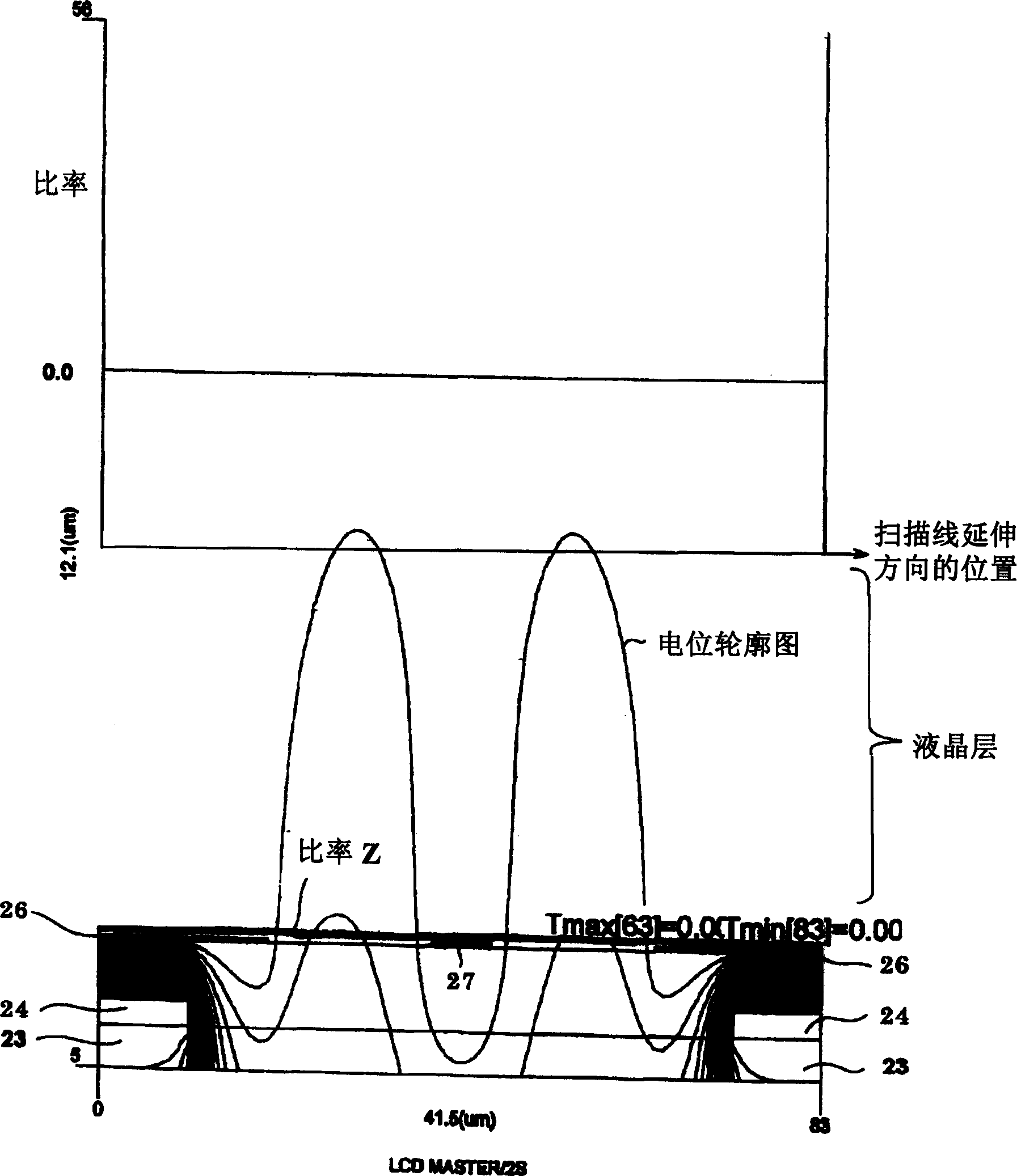Plane switch mode active matrix liquid crystal display device and mfg. method thereof
An active matrix and planar switch technology, applied to static indicators, instruments, transistors, etc., can solve the problems of not being able to completely shield and reduce the impact of light
- Summary
- Abstract
- Description
- Claims
- Application Information
AI Technical Summary
Problems solved by technology
Method used
Image
Examples
no. 1 example
[0388] 28A to 28K are sectional views of the liquid crystal display device 10 showing steps of a first example of the method of manufacturing the liquid crystal display device 10 including the second interlayer insulating film 25 having a multilayer structure of inorganic films and organic films.
[0389] First, as shown in FIG. 28A, a chromium layer as the first metal layer is formed on a glass substrate as the electrically insulating transparent substrate 22, and then, the chromium layer is formed into the gate electrode 30c and the common electrode 30c by photolithography and dry etching. The pattern of the electrode lines 26a and 26b. Although only the common electrode line 26b is shown in FIGS. 28A to 30I, the common electrode line 26a will be described below together with the common electrode line 26b because the common electrode line 26a is formed together with the common electrode line 26b.
[0390] Then, as shown in FIG. 28B, a first interlayer insulating film 23 is f...
no. 2 example
[0400] 29A to 29I are cross-sectional views of the liquid crystal display device 10 showing steps of a second example of the method of manufacturing the liquid crystal display device 10 including the second interlayer insulating film 25 composed of a single organic film.
[0401] First, as shown in FIG. 29A, a chromium layer as a first metal layer is formed on a glass substrate as an electrically insulating transparent substrate 22, and then, the chromium layer is formed into a gate 30c and a common electrode by photolithography and dry etching. The pattern of lines 26a and 26b.
[0402] Then, as shown in FIG. 29B, the first interlayer insulating film 23 is formed over the entire transparent substrate 22, covering the gate electrode 30c and the common electrode lines 26a and 26b. The first interlayer insulating film 23 has a multilayer structure composed of a silicon dioxide (SiO2) film and a silicon nitride (SiNx) film.
[0403] Then, as shown in FIG. 29C , an amorphous sili...
no. 3 example
[0411] 30A to 30I are cross-sectional views of the liquid crystal display device 10, showing steps of a third example of the method of manufacturing the liquid crystal display device 10 including the second interlayer insulating film 25 composed of a single inorganic film.
[0412] First, as shown in FIG. 30A, a chromium layer as a first metal layer is formed on a glass substrate as an electrically insulating transparent substrate 22, and then, the chromium layer is formed into a gate 30c and a common electrode by photolithography and dry etching. The pattern of lines 26a and 26b.
[0413] Then, as shown in FIG. 30B, the first interlayer insulating film 23 is formed on the entire transparent substrate 22, covering the gate electrode 30c and the common electrode lines 26a and 26b. The first interlayer insulating film 23 has a multilayer structure composed of a silicon dioxide (SiO2) film and a silicon nitride (SiNx) film.
[0414] Then, as shown in FIG. 30C , an amorphous sili...
PUM
| Property | Measurement | Unit |
|---|---|---|
| thickness | aaaaa | aaaaa |
| width | aaaaa | aaaaa |
| width | aaaaa | aaaaa |
Abstract
Description
Claims
Application Information
 Login to View More
Login to View More - R&D
- Intellectual Property
- Life Sciences
- Materials
- Tech Scout
- Unparalleled Data Quality
- Higher Quality Content
- 60% Fewer Hallucinations
Browse by: Latest US Patents, China's latest patents, Technical Efficacy Thesaurus, Application Domain, Technology Topic, Popular Technical Reports.
© 2025 PatSnap. All rights reserved.Legal|Privacy policy|Modern Slavery Act Transparency Statement|Sitemap|About US| Contact US: help@patsnap.com



